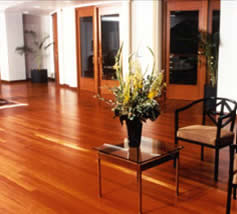Foot Fall insulation system for free-floating type wood laminate and engineered wood floor.
Floating floors refer to installing an isolated floor from the framing or structure in order to reduce the resonant vibration energy within the wall or ceiling construction. By installing floating floors you are reducing structure-borne or impact noise, such as footfalls, cupboards, doors shutting, etc., that are being transmitted through a building’s structure. This type of floor soundproofing is referred to as STC (Sound Transmission Classifications) and IIC Ratings (Impact Isolation Ratings).
Applications for floating floors include the following: Apartments, condos, and other residential settings where soundproofing is required to reduce unwanted noise coming through common footfall or impact noise coming from above. There are also commercial applications for this type of wall and floor soundproofing such as testing labs, executive offices, conference rooms, and more.

- Sound PROOFING AND Isolation products materials
- Isolation Pads
- Floor Underlayment
Installation Instructions for a Floating System
The laminate or engineered wood flooring is to float on top of the Foot Fall underlay without the use of adhesives. Do not assume that walls are perfectly straight or square. Foot Fall will be installed perpendicular to the direction of the finished floor to avoid seams in Foot Fall and the wood floor being aligned. Start in a corner and roll out Foot Fall. Trim off the end of Foot Fall 3/8″ from the wall. Maintain a gap of 3/8″ between the wall and the edge of Foot Fall. Continue rolling out Foot Fall adjacent to the last roll until the entire area is covered. Make sure that Foot Fall edges are tightly butted together, both side by side and end to end. If desired, a good quality duct tape may be used to cover seams. (never overlap the edges). Do not glue or adhere Foot Fall to the subfloor. Start laying out floor covering directly over Foot Fall, perpendicular to the direction of Foot Fall, leaving the same 3/8″ gap around the perimeter. Install baseboards 1/16″ off the finished floor to prevent contact with the floor.
•Acoustical testing on Foot Fall was performed without the use of adhesives.